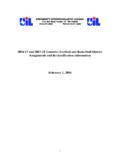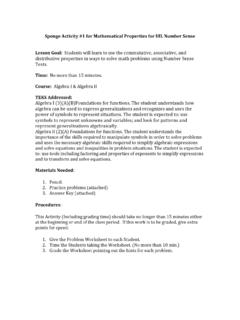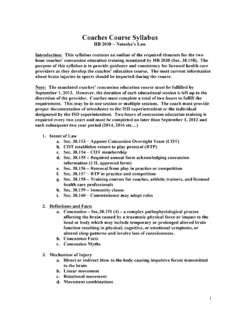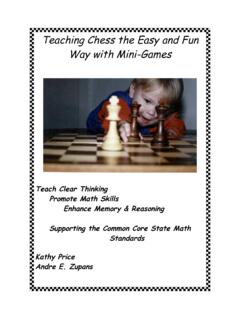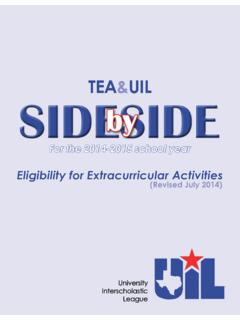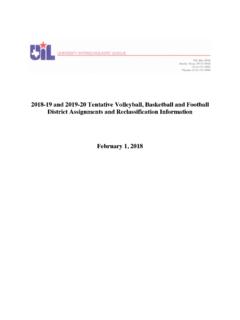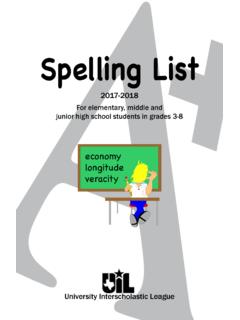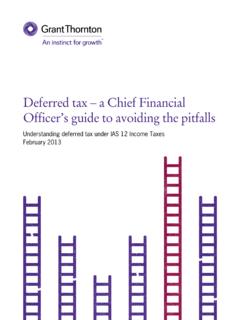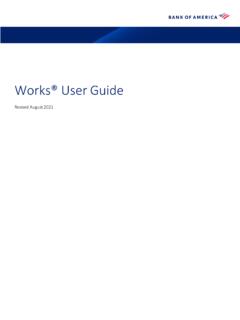Transcription of Cross-Examination Debate Basics Part I
1 Cross-Examination Debate Basics part I. By: Racy Grant Prosper HS. What is cross examination (CX or Policy) Debate ? Partner Debate Affirmative (supports status quo). Negative (opposes affirmative). 1 hrs. in length (if all time is used). Policy option resolutions Evidence based Important Terms to Learn Constructive Speech the first four speeches in a round. Used to build the basis for your case. Rebuttal Speech the last four speeches in a round. New arguments can not typically be brought up here. New evidence is OK but NOT new arguments. Prep Time 8 minutes per team given in round for the team to prepare responses to their opponents arguments. CX Time 3 minute time period after each constructive speech in which a team asks question of the person who just spoke.
2 Open CX CX time in which both partners on each team are allowed to participate in the questioning session. Times for CX Debate 8 min. 1st Affirmative Constructive (1AC). 3 min. CX by 2nd Negative 8 min. 1st Negative Constructive (1NC). 3 min. CX by 1st Affirmative 8 min. 2nd Affirmative Constructive (2AC). 3 min. CX by 1st Negative 8 min. 2nd Negative Constructive (2NC). 3 min. CX by 2nd Affirmative 5 min. 1st Negative Rebuttal (1NR). 5 min. 1st Affirmative Rebuttal (1AR). 5 min. 2nd Negative Rebuttal (2NR). 5 min. 2nd Affirmative Rebuttal (2AR). More Important Terms to Learn Negative Block the back to back speeches that the negative has in the middle of the round Paradigm the way the judge will adjudicate the round Plan Text The part of the plan that stipulates exactly what the affirmative will be doing Resolution The topic established to be debated Fiat The affirmative's right to assume that if their case is proven, it will be inacted.
3 Flowing Taking notes in a structured fashion in a Debate round. Even More Terms to Learn Offense arguments given by debaters that provide a reason for you to support a vote for them or their side Defense arguments given by debaters that negate arguments by the other team (only a mitigator). Spreading speaking exceptionally fast in order to get a vast majority of evidence and argumentation in the round Extend take an argument or piece of evidence made earlier in the round and keep it in the round for consideration cross -Apply take an argument or piece of evidence made on one issue and use it to answer another argument Almost Done with Terms Overview A summary at the start of an argument or a speech that summarizes the key points and voting reasons on the argument.
4 Underview A summary at the end of an argument or a speech that summarizes the key points and voting reasons on the argument. Framework The way that the debaters are asking the judge to view the round. Impact Calculus A part of a speech in which the debater weighs the offense of the affirmative over the offense of the negative to see who should win the round. Turns Making an argument for the other team into an argument for your team Take-Out Mitigating an argument that your opponent makes TERMS YOU MAY HEAR IN. ROUND. HEGEMONY the ability of a power to influence the decisions of others. SOFT POWER a means of influencing others using diplomatic measures HARD POWER a means of influencing others using military might or other force POLITICAL CAPITAL the popularity and influence that a particular leader or party to get things accomplished.
5 STOCK ISSUES pt. 1. HITSS. HARMS the problems that the affirmative team establishes are in the status quo that they seek to solve. INHERENCY Proof that the harms aren't being solved already in the status quo and/or that there is something preventing the resolution of the harms in the status quo TOPICALITY Arguments centered around whether or not the affirmative is actually debating the topic. STOCK ISSUES pt. 2. Significance (rarely argued anymore). argument about the significance of the harms Solvency proof and argumentation surrounding the ability of the affirmative plan text to solve the harms that are presented in the case OTHER TYPES OF IMPORTANT.
6 COMPONENTS OF THE ROUND. ADVANTAGES positive impacts to the affirmative plan being passed DISADVANTAGES negative impacts to the affirmative plan being passed COUNTERPLANS negative plan presented to counter the affirmative plan KRITIKS (pronounced critiques) arguments attacking the philosophical implication of something that is done in the round or the mind set created through the argumentation within the round. HARMS. Those problems occurring in the status quo that must be solved with the passage of the affirmative plan. There does not have to be a substantial number of harms, but the harms presented must be solved by the aff plan Harms should fall within the resolution Arguing Harms Affirmative presents them in the 1AC.
7 Negative argues that the harms presented by the status quo don't truly exist or that they are exaggerated and not sufficient to be considered Inherency Typically more important to stock judges than to policy or tab judges (will discuss in next session). 3 types Structural Some legal (usually) barrier in the status quo that is preventing the harms from being solved now or the affirmative being passed Attitudinal The attitude of the government, people, etc. that is currently preventing the plan being passed in the status quo Existential The fact that the harms are not being solved in the status quo or that there is no framework for them to be solved. Arguing Inherency Affirmative plan can't be solved in the status quo because.
8 Negative there are already plans or programs established in the status quo to solve the harms or there is nothing preventing the solving of the status quo TOPICALITY TYPES. Not Topical concept that the affirmative is not debating the topic. (ex. The USFG should substantially reduce poverty in the US. Aff teaches farmers in Ethiopia how to farm and create income to reduce poverty there). Effects Topical concept that the affirmative doesn't directly do what the topic calls for them to do. (ex. The USFG should substantially reduce poverty in the US. Aff gives tax cuts to the business owners which, the aff proves, will cause lower prices and increase wages).
9 Extra Topical concept that the affirmative plan does more than what the topic requires. (ex. The USFG should substantially reduce poverty in the US. Aff provides more food stamps to Americans living in poverty and decreases the mortgage interest rates for the middle class. Parts of a Topicality Violation Interpretation - Definition and source of definition Violation how the affirmative violates the definition, and thus the resolution Standards Reasons that the definition provided is the one that the judge should consider in the round Voters reasons why Topicality should warrant a vote by the judge if the violation is proven Answers to a Topicality Violation We Meet (if possible) show how the affirmative plan meets definition provided by the negative Counter-Interpretation Another definition presented by the affirmative that their plan meets Counter-Standards and/or Standards comparison Reasons that the aff.)
10 Definition is better and reasons why the neg. standards are not true or valid. Voters Reasons NOT to vote the affirmative down based on topicality Arguing Significance Affirmative Argues that their harms are significant (either quantitatively or qualitatively) enough to validate the affirmative plan Negative Argues that the problems are insignificant so as to not validate money being spent, potential lives being lost, etc. Arguing Solvency Affirmative provides evidence and analysis that their plan text will solve the harms they presented in the 1AC. Negative can Take-out show that they can not access their solvency or can not solve their harms Turn make the solvency they claim into a bad thing (ex.)



